New Caledonia - Surprise Island, or Paradise Lost
Destination - PacificA little more than 100 miles northwest of New Caledonia, the long d’Entrecasteaux Reef reveals three motus: islets of coral sand. The Surprise atoll owes its name to the navigator-explorer Antoine Bruny d’Entrecasteaux, who was astonished to discover this emerging land when he thought he had rounded Grande Terre.
On deck, under a thin crescent moon, we both waited for the dawn, knowing it would be spectacular. The day dawns on the d’Entrecasteaux atoll. Thousands of birds are already flying over Surprise Island. The most daring ones saw us coming from afar; they joined us and are now hovering above the mast, often just missing getting caught up in the shrouds. We feel welcomed by this wild nature. We drop anchor in the turquoise blue-green water. We’re alone, completely alone, feeling like Robinson Crusoe...
The anchorage is a little rough, but the landscape is beautiful! The biodiversity reminds us of the Chagos Islands, in the middle of the Indian Ocean. As there, the animals are not afraid of us. In fact, they are rather curious and unconcerned by our presence. A whole community of seabirds nests on these few square meters of land; boobies, frigate birds and smaller ones whose names I do not know. As access the interior of the island is forbidden in order to preserve the species, we observe from the sandy perimeter. The vegetation is not extremely dense, but it would appear to be thick enough for the population of birds which is dotted across the area according to the needs of each one. The most remarkable are the boobies, which are far more numerous than the others. No less than one nest every meter shelters the offspring of these sulids. Some of the young are still in the egg stage, others are cute chicks. The most amusing are the juveniles. Not yet adult, they outstrip their mother by a head and are in full molt. They behave like young teenagers... Underwater, the diversity of species is astonishing, and the size of the fish is striking. The intense turquoise colored parrotfish are very fleshy, the loaches reach disproportionate sizes and the jacks are gigantic.
Each excursion away from the catamaran brings its selection of shots. We never leave without our camera equipment. We are now close to Huon Island. Like our previous anchorage, the strong current is not easy to reconcile with this quiet place. The waves hit the starboard side of Black Lion, making her mast swing from one side to the other. Such a roll would probably have persuaded us to move on in any other place... but being here is a privilege. Once we are sure that our anchor is well secured on the seabed, I like to let my mind wander and imagine the extraordinary discoveries we will make. The windward shores are often littered with everything the ocean no longer wants. Apart from all the toothbrushes, flipflops and other human pollutants, this time, tiny nautilus shells will be our treasure. Further to the center of the island, big turtles have chosen to come here to die. Their sun-bleached carcasses lie amid hermit crabs and a grass-like bed. Around them, the brown sand and reefs uncovered by low tide give even more brilliance to the colors of the lagoon. We are in splendid isolation! Anything can happen in the world, but it won’t influence the course of our life here. But the exclusivity granted to us in this paradise will have to be shared. A 60-odd foot yacht enters our field of vision - and then into the lagoon. Selfishly, we would like to keep this Shambala ("place of peaceful happiness" in Sanskrit) just for us! Instead, we leave and head for Chesterfield Reef...
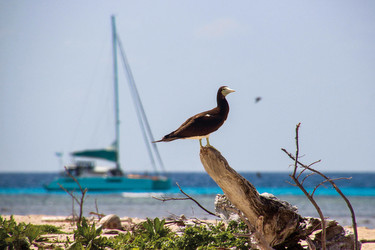 |
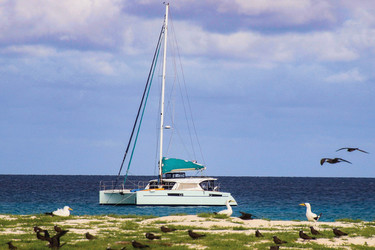 |
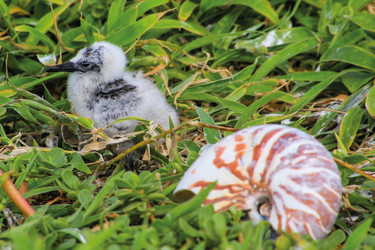 |
Destinations offered by
View all the destinations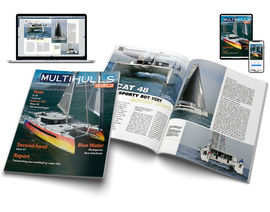
Subscribe and get 8 issues a yearfor just $39.90
subscribeClassified ads
View classified adsKnysna 500SE
- Location :
- Knysna, South Africa
- Year :
- 2023
 Discover the 2025 winners!
Discover the 2025 winners! 
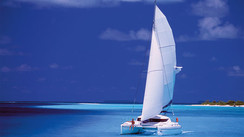
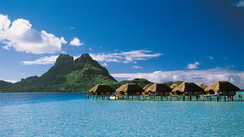
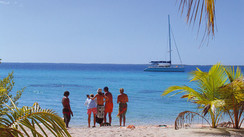
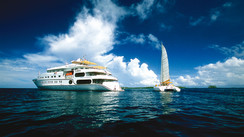
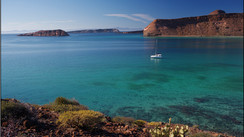
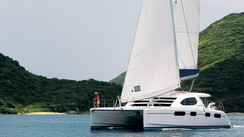






What readers think
Post a comment
No comments to show.